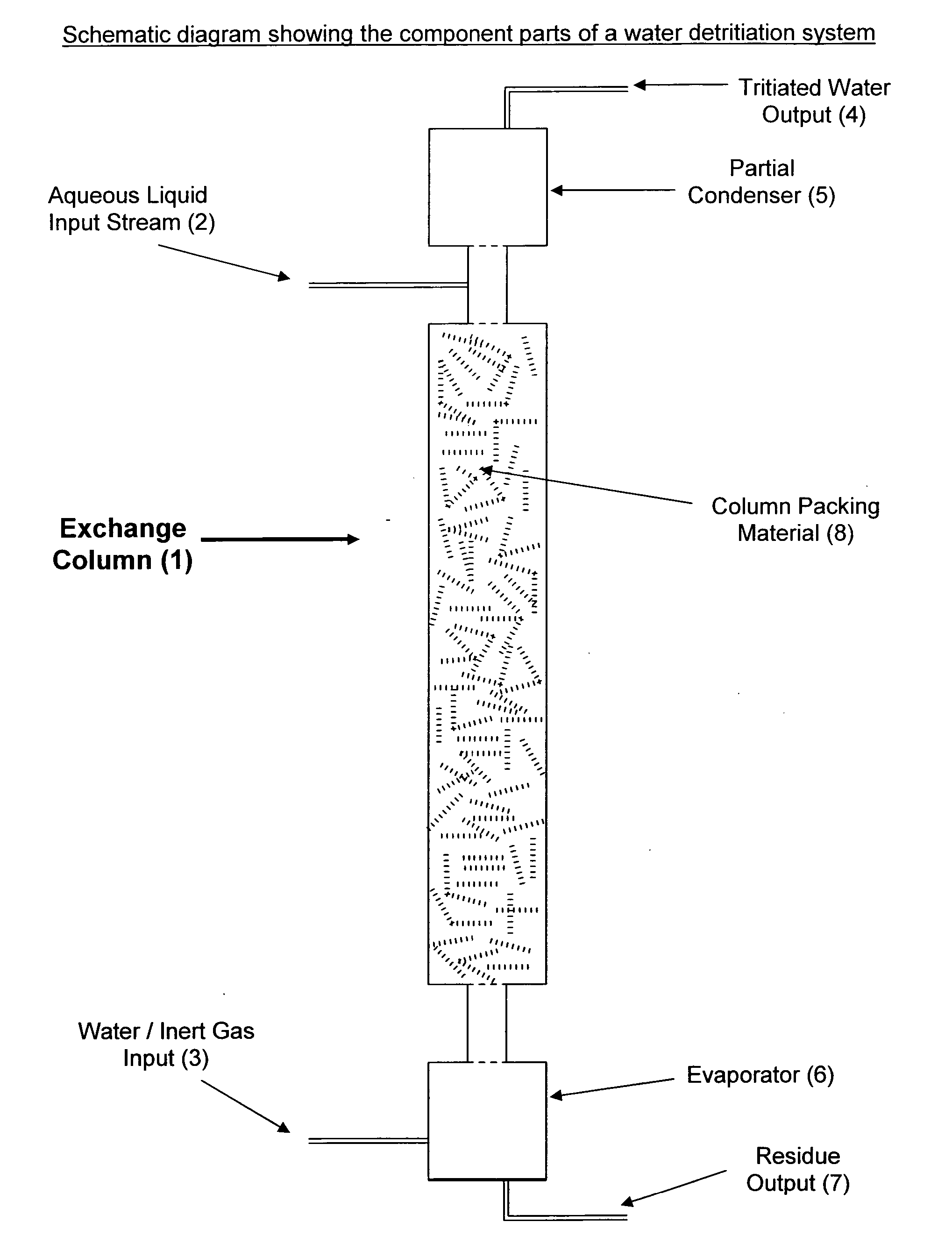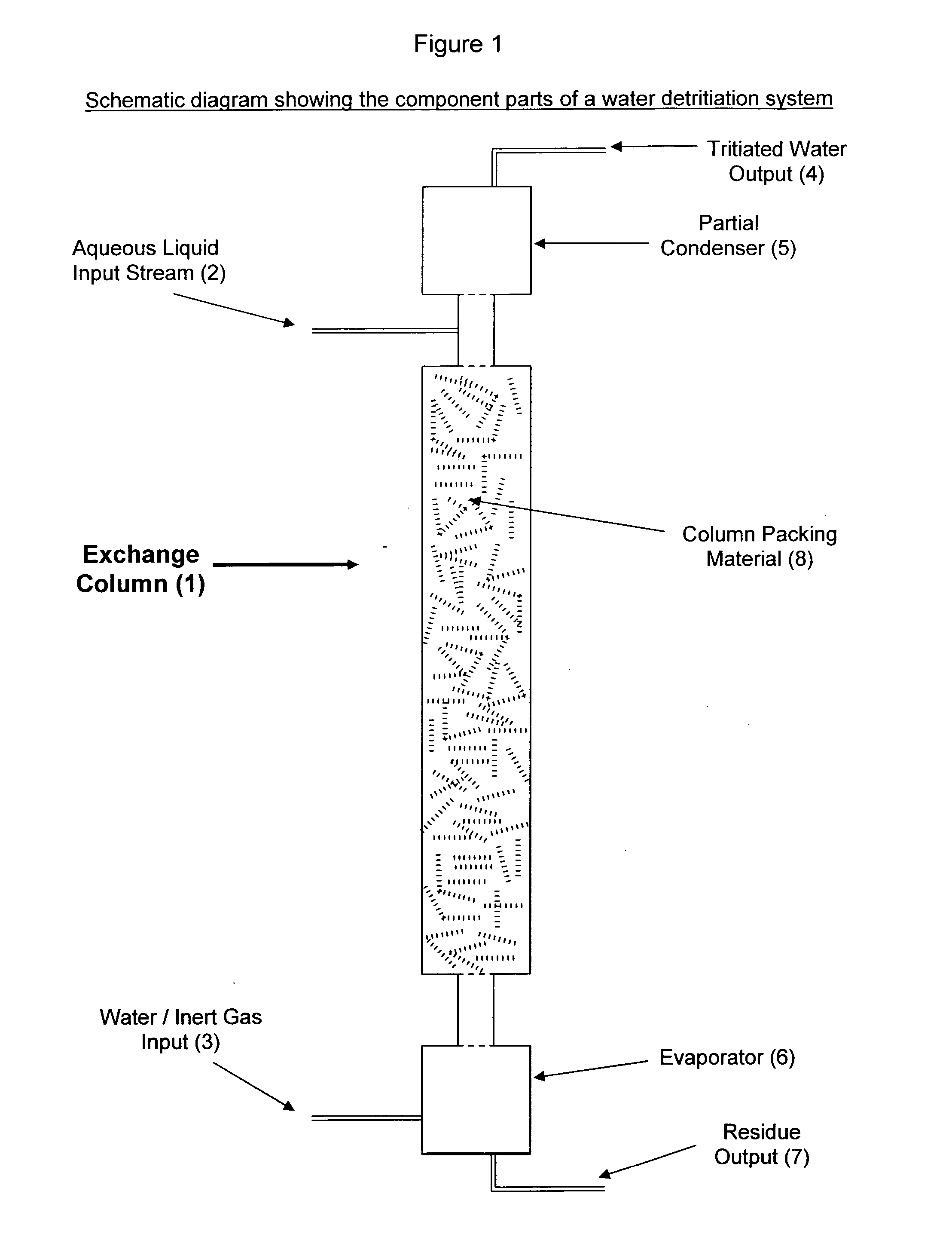Process for recovery of water isotopologues from impure water
a technology of impure water and isotopologues, applied in the direction of water, separation processes, heavy water, etc., can solve the problems of affecting the recovery effect of water isotopologues, the acidic gases are most prevalent, and the detritiation of aqueous liquids containing dissolved impurities, etc., to achieve a simple and effective process
- Summary
- Abstract
- Description
- Claims
- Application Information
AI Technical Summary
Benefits of technology
Problems solved by technology
Method used
Image
Examples
Embodiment Construction
[0016]A detailed description of a preferred embodiment of the present invention is provided herein. It is to be understood however, that the present invention may be embodied in various forms. Therefore, specific details disclosed herein are not to be interpreted as limiting, but rather as a basis for the claims and as a representative basis for teaching one skilled in the art to employ the present invention in virtually any appropriately detailed system, structure, or manner.
[0017]FIG. 1 shows a diagram of an exchange column (1) suitable for the recovery of tritium from an aqueous liquid comprising oxides of tritium and dissolved impurities. In accordance with the present invention, an aqueous liquid input stream (2) containing dissolved salts, acids, bases and / or soluble organics enters the top of the exchange column (1) and is allowed to flow in a downward direction through the column (1). A mixture (3) containing substantially tritium-free liquid water (3a) and carrier gas (3b) ...
PUM
 Login to View More
Login to View More Abstract
Description
Claims
Application Information
 Login to View More
Login to View More - R&D
- Intellectual Property
- Life Sciences
- Materials
- Tech Scout
- Unparalleled Data Quality
- Higher Quality Content
- 60% Fewer Hallucinations
Browse by: Latest US Patents, China's latest patents, Technical Efficacy Thesaurus, Application Domain, Technology Topic, Popular Technical Reports.
© 2025 PatSnap. All rights reserved.Legal|Privacy policy|Modern Slavery Act Transparency Statement|Sitemap|About US| Contact US: help@patsnap.com


